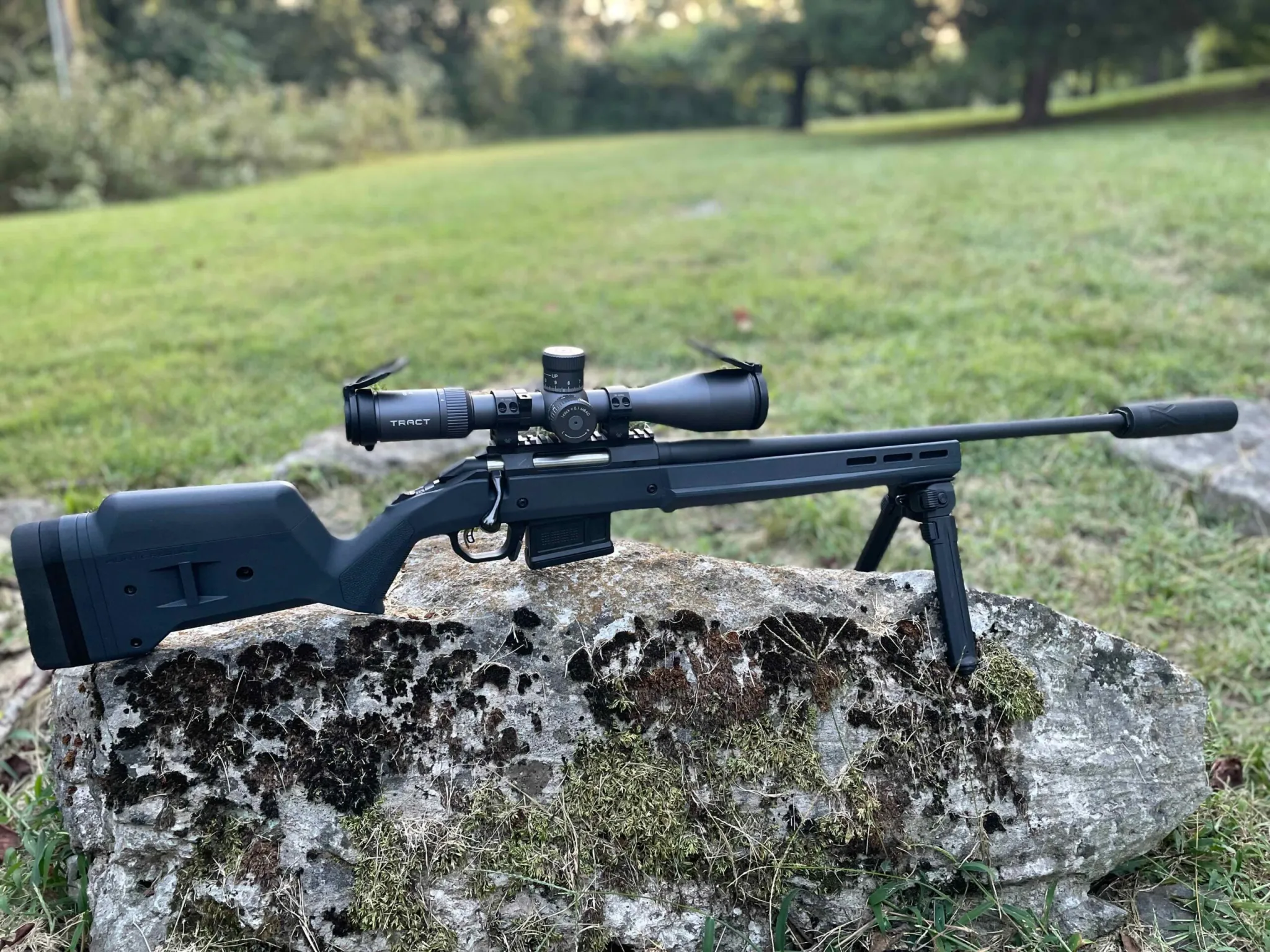While red dots and LPVOs seem to rule the carbine market, I’ve always been a fan of prism-style optics. I blame it on my time with the ACOG in the service, but I’ve always found prisms to be my favorite type of optic. They are lighter and smaller than LPVOs, but offer magnification, unlike red dots. Typically a prism weighs more and is larger than a red dot, but with the new Vortex Spitfire HD Gen 2, that might be a thing of the past.
Squeezin’ It In
The original Spitfire prism optics were most certainly larger than most red dots. The latest Spitfire HD Gen 2 optics have shrunk things considerably. The new models come in 3X and 5X, and today we are taking a peek at the 3X model. The new Spitfire HD Gen 2 3X optic is 3 inches long and weighs only 9 ounces. It’s smaller than a full-sized red dot like the Comp M4 and provides you with some real, functional magnification.
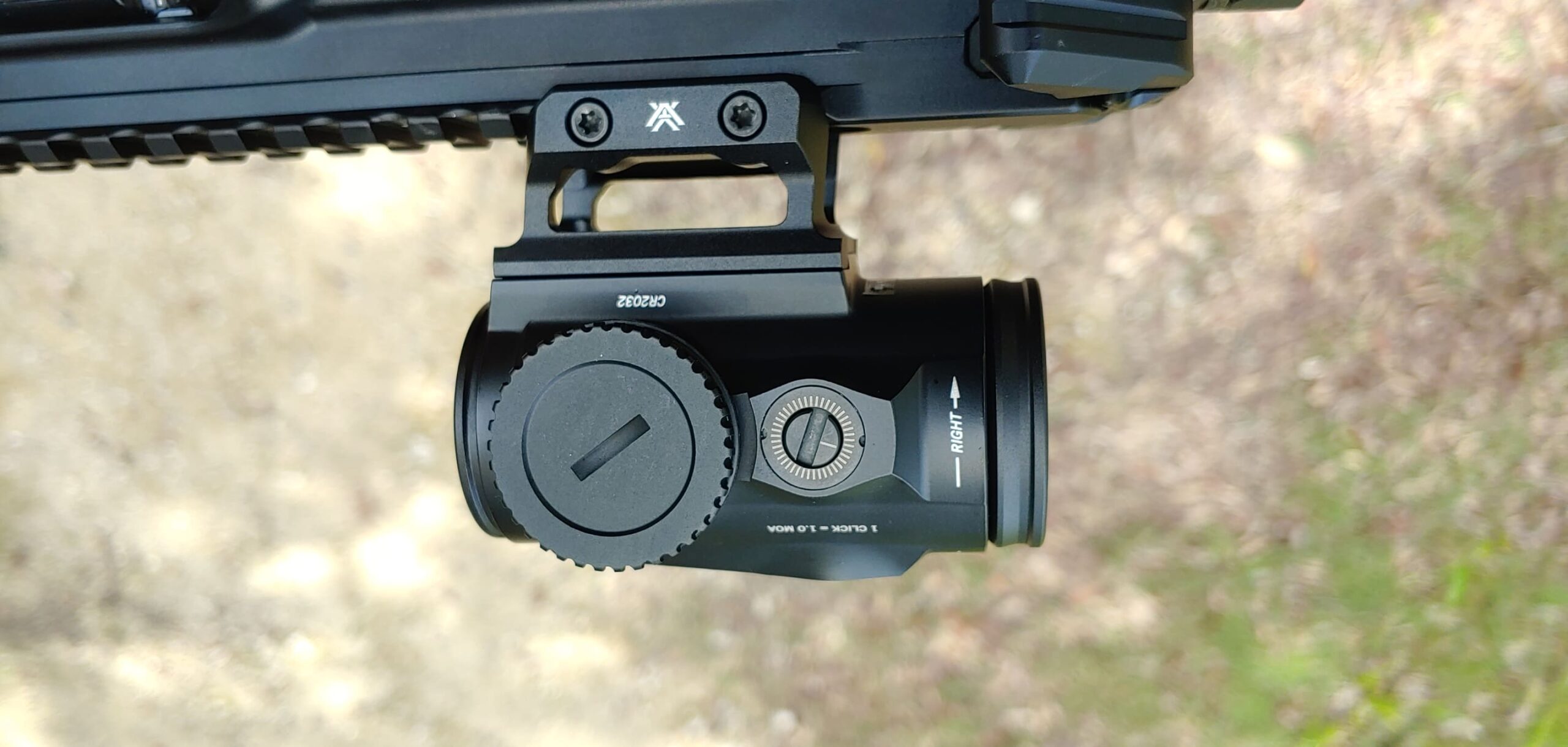
It looked like a red dot and surprised me when I pulled it out of the box. I tossed it on my Aero EPC because I’m a little short on 5.56 and wanted to experiment with magnified optics on PCCs. In the Spitfire HD Gen 2 box, you can choose between a low mount and an AR height mount. The optional mount heights are a nice touch and make it easy to mount the optic to nearly any other rifle. Perfect for an AK, a Scorpion carbine, and obviously ARs.
In the box, you get a CR2032 battery, a small tool to both zero the optic and swap mounts and mount it to your optics rail. Attaching the mounts and mounting the optic takes no time at all, and neither does installing the battery. The bikini-style rubber lens covers are floppy and annoying. I took them off to use the optic and would likely only ever use them for storage.
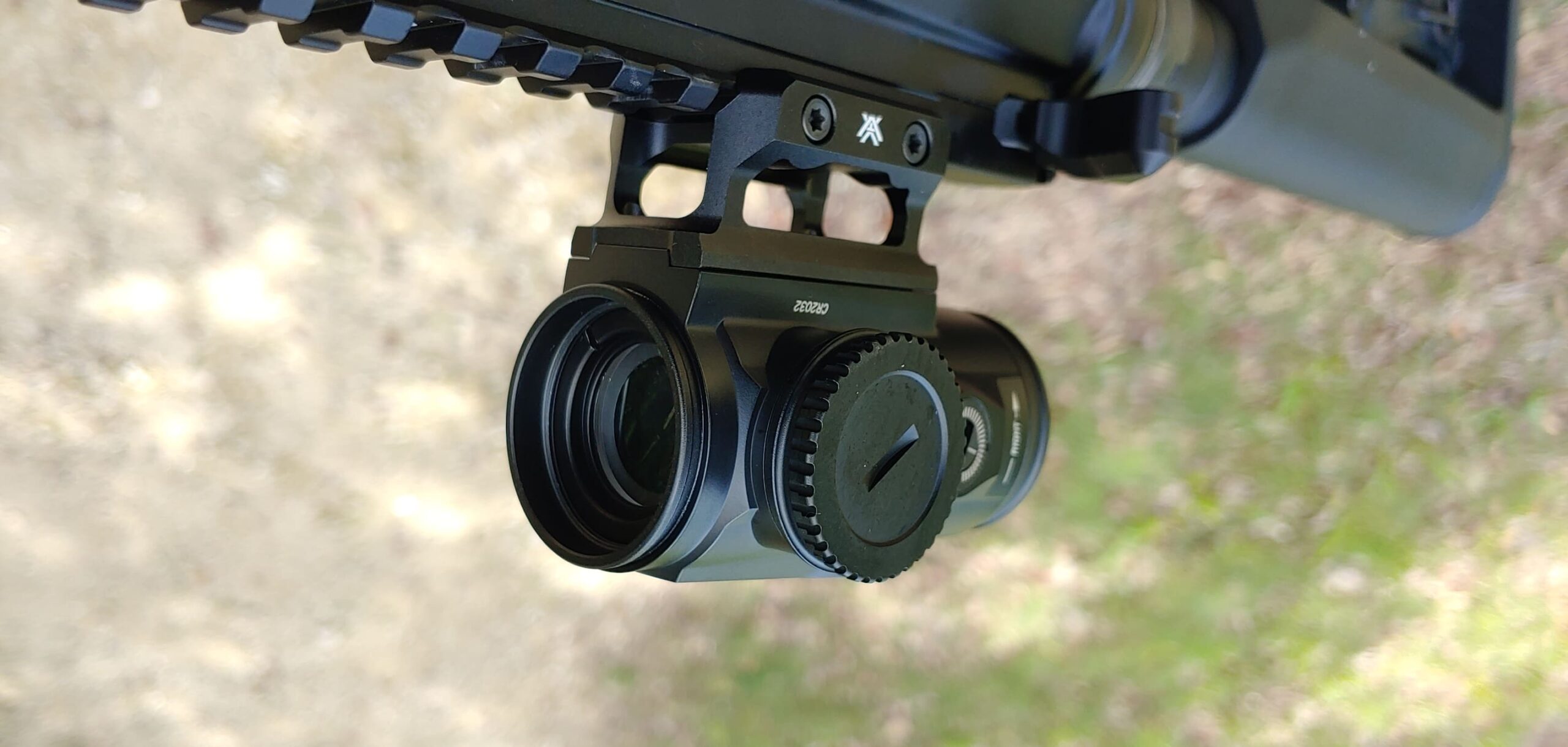
The Spitfire HD Gen 2 provides water and shockproof construction. We get 12 illumination settings, with the two lowest being night vision compatible. The controls are + and – buttons that are rubberized and rather large, making illumination adjustments easy.
The Reticle
We get an etched and illuminated reticle Vortex calls the Spitfire HD Gen 2 AR-BDC4. It’s a mouthful and a fancy way of saying it gives you a BDC for a 16-inch carbine in 5.56/223 out to 650 yards. Luckily Vortex provides an MOA explanation on their website, so you can adapt it to whatever caliber and barrel combination you want.
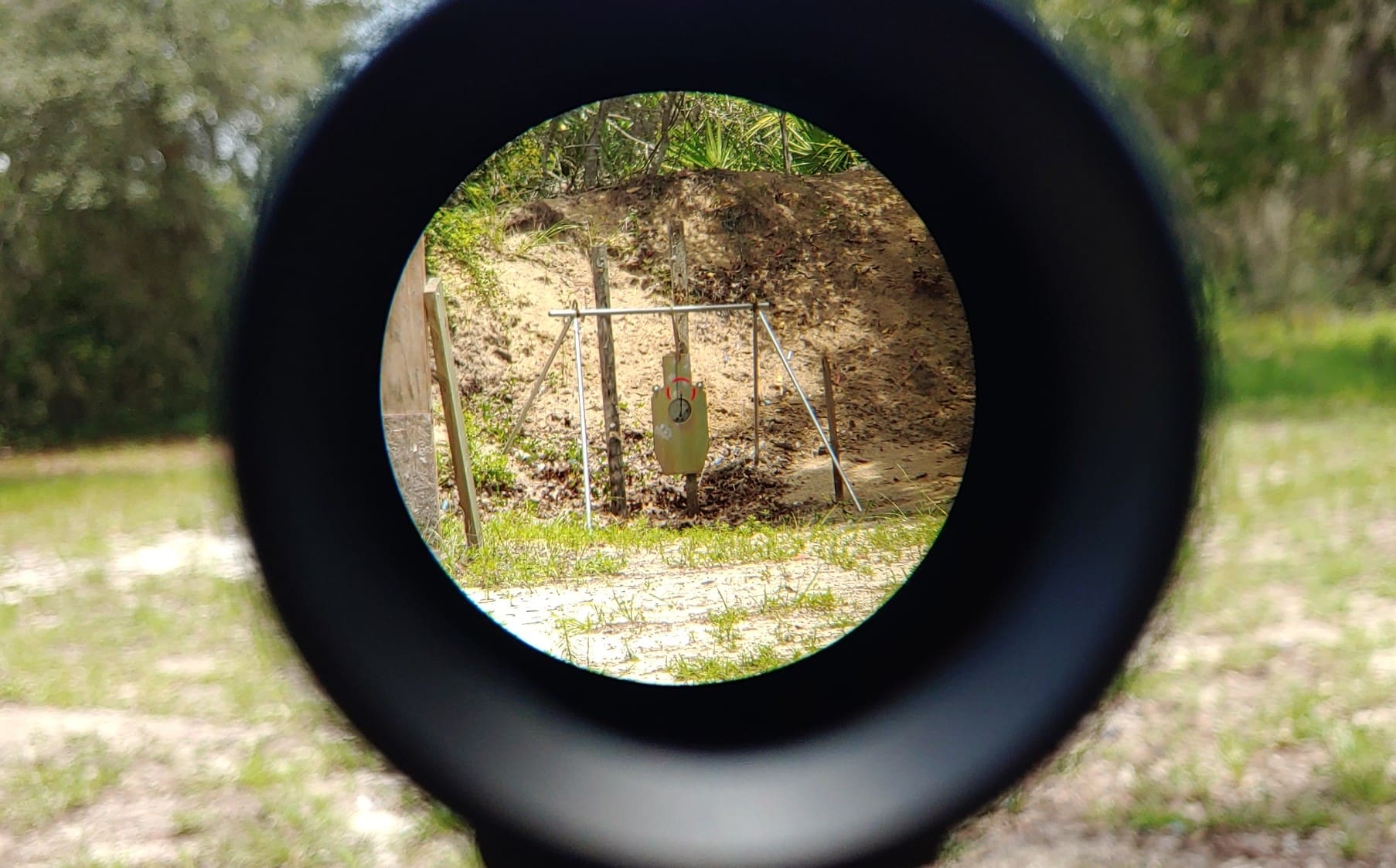
In the center sits an illuminated 1 MOA dot, and surrounding it is a three-quarter circle that’s also illuminated. Illumination in prism optics performs an important task. Not only is it handy in low-light shooting, but it also makes close-range shooting a good bit easier and faster.
The illuminated reticle provides a quick-to-the-eye reference point, and to shoot close range with a magnified prism, you focus with your non-dominant eye — both eyes open — and the red reticle appears on target.
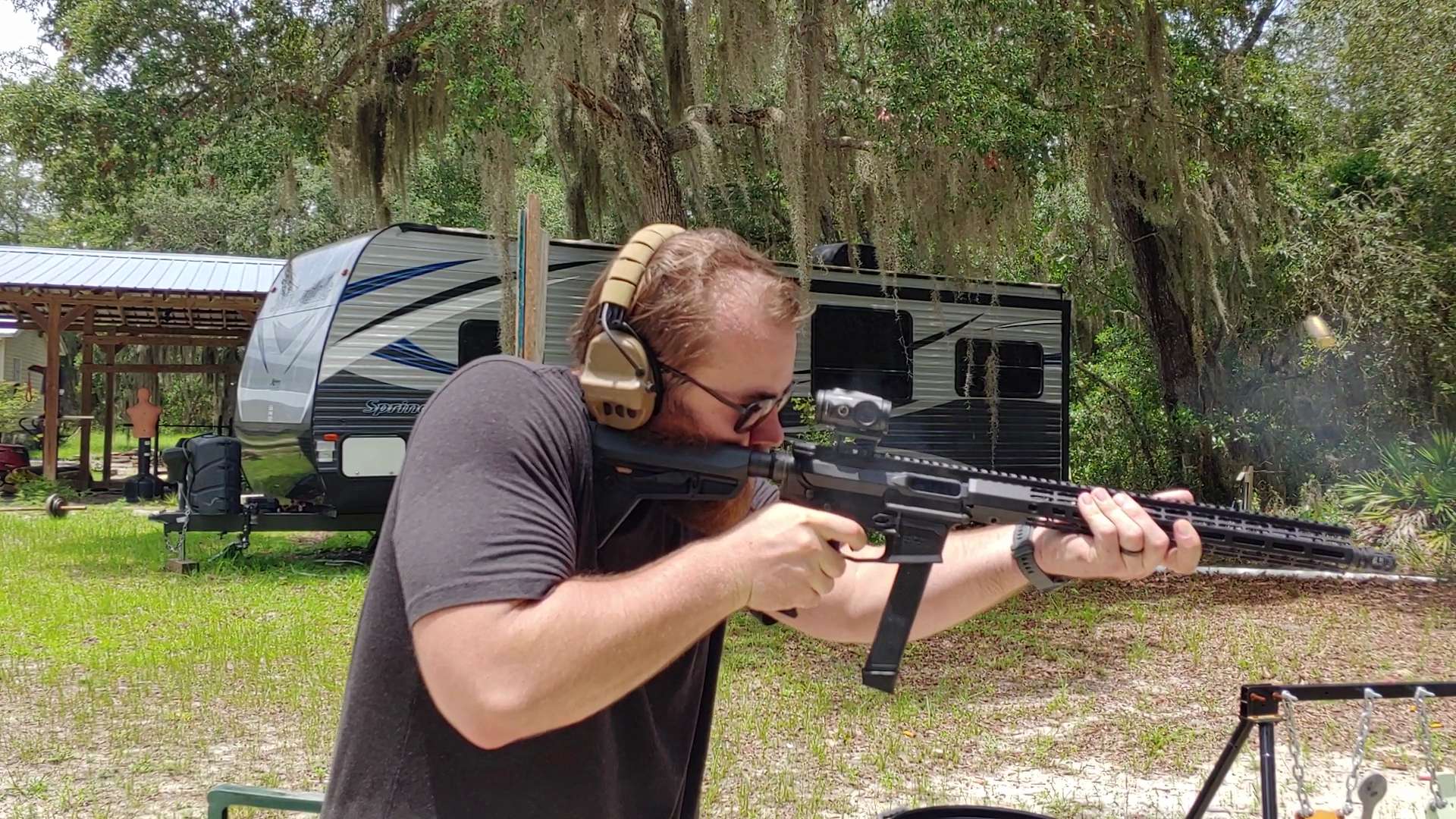
You’re not using the magnification, so it doesn’t get in the way of shooting at 0 to 20 yards or so. Your brain superimposes the reticle on your vision and makes using the Vortex Spitfire HD Gen 2 at inside-the-house ranges rather easy.
At the Range
The 1 MOA adjustment clicks make adjusting and zeroing with the Spitfire HD Gen 2 easy, if less granular than with some of the competition. If you can do basic math, you can zero quickly at 25 and 50 yards.
The included tool provides a simple flat-head that’s handy for the slotted turrets. The adjustments provide tactile feedback and click very nicely. After nine rounds, I was hitting the bull’s eye, so to speak, and ready to hit it at various ranges.

The Spitfire HD Gen 2 provides a rather forgiving eye box but a strict eye relief of 2.6 inches. It’s close, and that is a downside of prism optics. The field of view is a generous 37.9 inches at 100 yards and isn’t bad for the compact design.
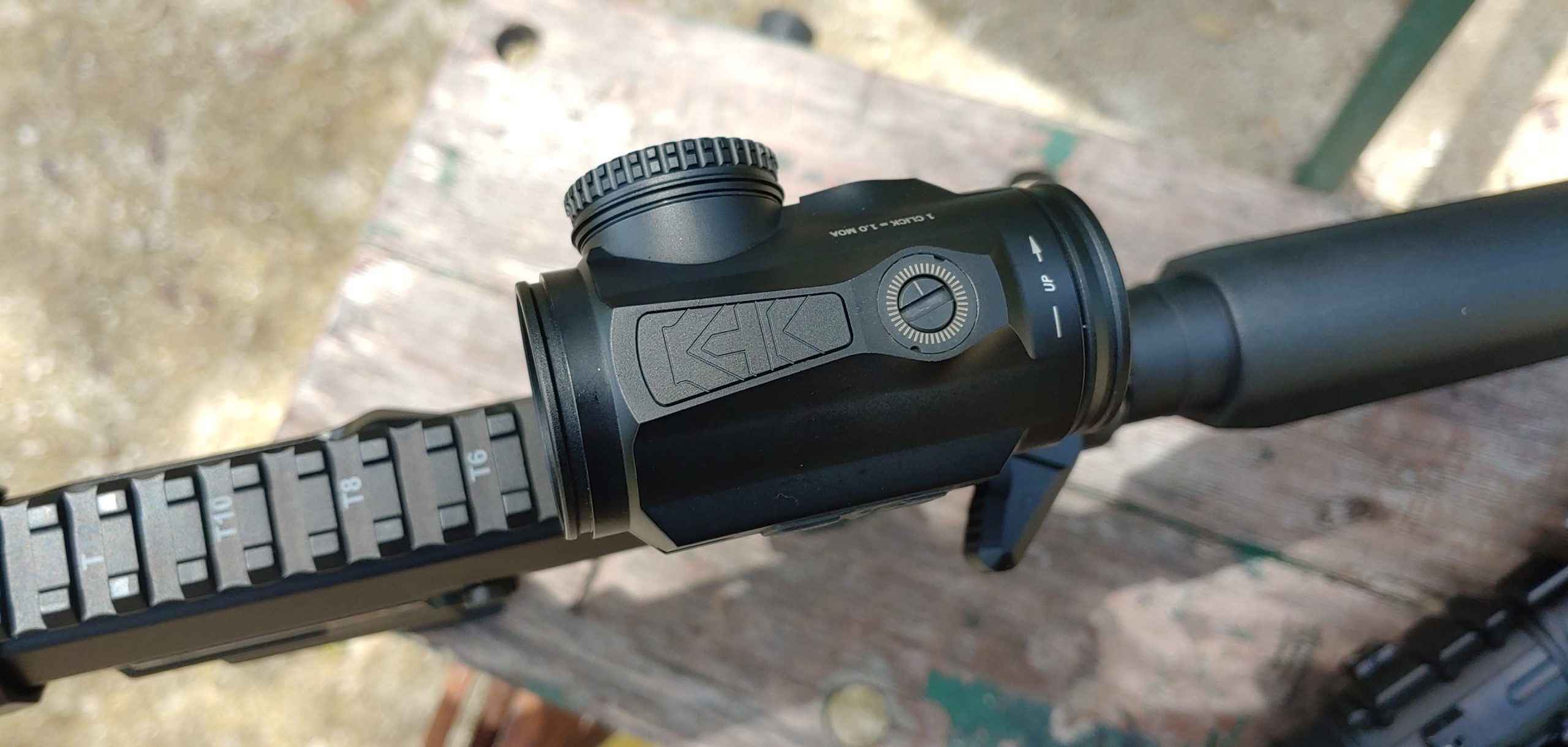
I started at 15 yards and used the two eyes open occluded shooting method. Against a timer, I had no problems landing fast and accurate failure to stop drills on target. The big, bright reticle provided me with an easy-to-see option for this shooting method. It’s not insanely precise, but good enough to stop a bad guy. Daylight illumination isn’t a problem, and the high noon of Florida doesn’t challenge the reticle’s illumination.
Getting Close
If you need to take a precise shot at close range, the prism reticle works well, too. The reticle makes overcoming mechanical offset simple. Aim with the bottom of the reticle to score very precise hits at close range. After I conquered bad breath range, I kicked it back to 50 yards and started ringing steel with the Spitfire HD Gen 2.
I pinged my 8- and 6-inch gongs with no problems whatsoever in the standing position. The 4-inch gong evaded most of my rounds in the standing. When I dropped to a kneeling and prone position, I did much better with that little guy. The glass provided a very clear image, and the magnification and glass clarity made it easy to see the multicolored gongs in the shaded downrange area.
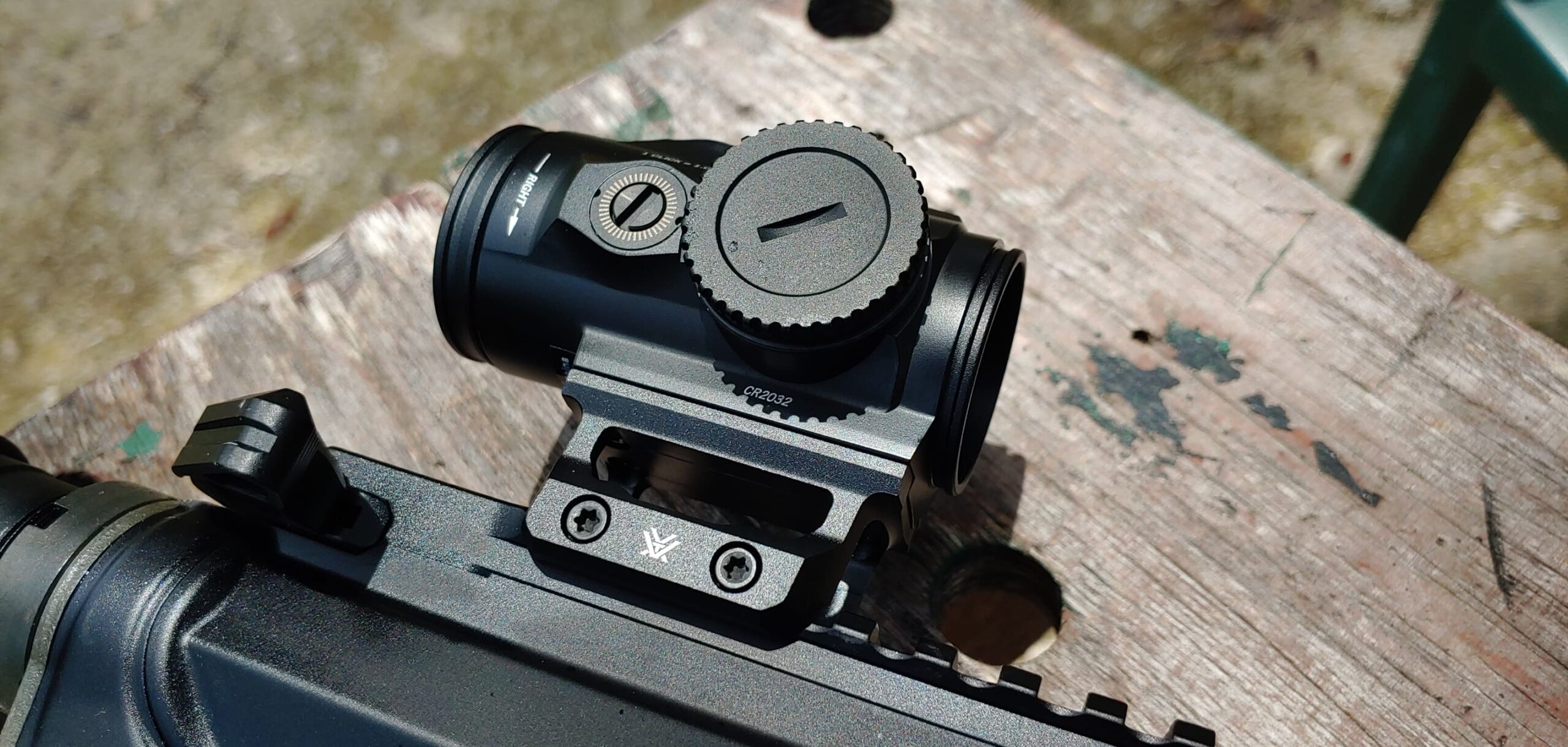
I set up a man-sized steel target and beat feet back to the 100-yard line. Since I peeked at the Vortex reticle manual, I knew the MOA holds and aimed with the small circle halfway between the third and fourth stadia lines. 9mm drops about a foot at this range, and this aiming point proved true. I held that lower stadia point at the target’s chest and hit the chest portion with every round.
I did this in the standing and was tickled to be making somewhat accurate hits at 100 yards with a 9mm. The Spitfire HD Gen 2 and that 3X magnification made it easy. Sure there was some variance with a round hitting at the bottom of the chest and one or two hitting in the neck area, but 100 yards isn’t 9mm’s strong suit.
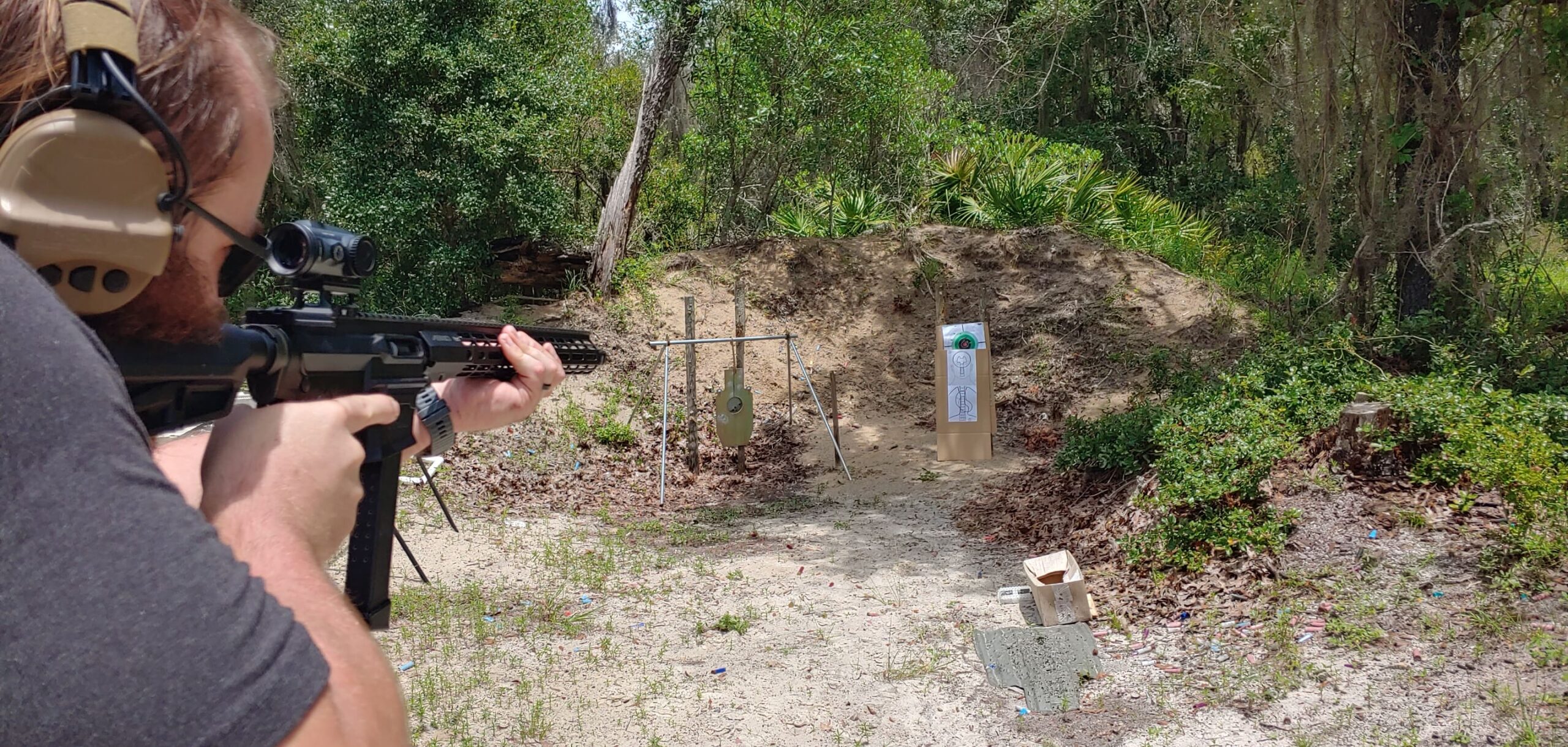
The Spitfire HD Gen 2 makes it easy to drop rounds where you want them to be. Back at 100 yards, I had zero problems seeing the targets, even the smaller targets. While I’ll brag about my man-sized targets, I didn’t do so well against the gongs. The 10- and 8-inch gongs were history in the kneeling and prone, but trying to hit the 6-inch gong wasn’t easy, and the 4-inch was a pipe dream.
Tracking
I used a Birchwood Casey Target with inch-sized squares and a tight, supported rifle position and tried my hand at testing the adjustments and scope tracking. I did so at 50 yards instead of 100 and factored that into my adjustments. 1 MOA adjustments, 50 yards, and a target with inch-sized squares made testing the adjustments easy. I’m still new at scope tracking, but the 1 MOA adjustments are dead on. I dialed it left, down, right, up, and back to center with ease.
The Spitfire HD Gen 2 provides shooters a very nice optic at a reasonable price point. They’ve shrunk the prism optic down a good bit, and that makes it more approachable for light carbines, and in this case, PCCs. The design is perfect for modern carbines, and if you like prisms, you’ll like this optic. If you like red dots, but want magnification and/or have issues with astigmatism (which an etched reticle resolves), then you’ll like this optic.
Specifications: Vortex Spitfire HD Gen II 3X Prism Scope
Length – 3 inches
Weight – 9 ounces
Magnification – 3x
Eye Relief – 2.6 inches
Field of View – 37.9 feet @ 100 yards
Objective Lens Diameter – 21mm
MSRP: $549.99 (about a hundred bucks less at Brownells)
Ratings (out of five stars):
Ergonomics * * * * *
The Vortex Spitfire HD Gen 2 is the smallest, lightest prism optic that provides magnification I’ve ever encountered. The buttons are massive and easy to use, and the adjustments click along very nicely.
Clarity * * * *
You might not mistake it for a Nightforce, but clarity is on par with most low magnified prism optics. I’d say the image looks better than what I used to see through my ACOG. I can see colors, shades, and nothing looks fuzzy at the ranges you’d use 3X magnification for.
Reliability * * * *
Hundreds of rounds, a couple of accidental drops, and banging around in my truck later, and the optic runs without issue. It’s summer in Florida, so it’s been rained on, and in the trunk, temps reached over 100 degrees easily. I took a star off simply because it’s not rated to Aimpoint levels of Gs, temperature, or submersion. Plus, the etched reticle means it works without batteries or functional electronics, which is a trick that a red dot can’t match.
Ease of Use * * * * *
Put the dot or stadia on target and pull the trigger. Hear the ding, succeed. Seriously, prisms are very simple and easy-to-use optics. It’s tough to beat for new shooters and handy for the experienced. The etched reticle also eliminates “starburst” or double-dot issues that shooters with astigmatism experience with traditional red dots.
Overall * * * *
The Spitfire HD Gen 2 from Vortex is an outstanding optic. I’m suitably impressed by the quality, design, small size, and clear sight picture. The attached price tag isn’t awful, either.




